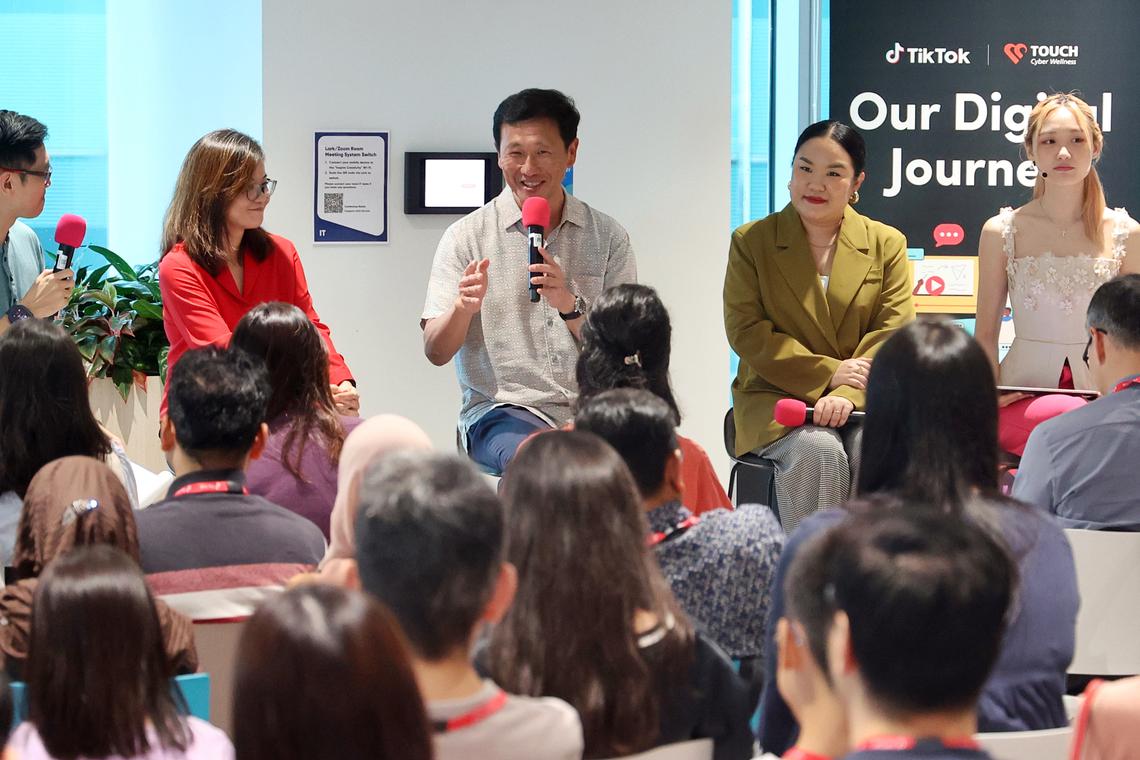SINGAPORE – There is a need to start thinking about what technology companies, parents and others can do for teens when it comes to their use of social media, said Minister of Health Ong Ye Kung.
Devices such as mobile phones and televisions take children’s time away from doing other things such as interacting with their parents and siblings, and are a substitute for play, in the case of children aged 12 and below.
But when it comes to teenagers, it is “no longer about devices – it is about social media and how you interact with social media”, the minister noted. “Here, I think we need a lot more conversation.”
He added: “We need to start thinking about what can we do for (those aged) 13 and above, and what can tech companies do, what can parents do with your children?”
Mr Ong was speaking during a panel discussion on the role of family, community and technology in the use of digital devices among children on Feb 23. This was part of the launch of a new digital parenting initiative titled “Our Digital Journey” by social media platform TikTok and the non-profit Touch Cyber Wellness.
This will see parent-teenager workshops rolled out in March, starting in Sembawang GRC, and later to other communities and schools nationwide. The programme hopes to train more than 250 parent-teenager pairs in 2025.
In January, the Ministry of Health issued updated guidelines to manage the use of screens for children up to the age of 12, providing stricter and clearer advice for parents.
Mr Ong said this is not meant for compliance, but as a useful set of guidelines that supports parents.
The updated guidelines are part of a new national health strategy to encourage children and adolescents to adopt healthier lifestyles. Called Grow Well SG, it is initially focused on children up to 12 years old, but will be extended to older age groups.
For example, for children aged 18 months to six years, MOH advised parents to limit screen use to less than an hour a day outside school.
Noting how much computing power is placed into the hands of a child, Mr Ong said: “It is a tremendous power that has been given to our children. I think we will put a lot of safety valves.
“I know the industry cares about this… The world is moving in that direction. We cannot reverse it. We got to do something about it.”
Mr Ong provided an example of his daughter, who is in her 20s, and said she gradually cut down the amount of time she spent on social media and now uses it for two minutes a day, from an hour previously.
“How did she come to that? We didn’t nag her. We didn’t say, ‘Why are you spending so much time, and you should spend less’. I think the number one rule for all parents that I learnt: We cannot nag,” said Mr Ong.
He also emphasised that parents should set an example: “If my wife and I, over dinner, are on our phones, there is no chance we can persuade our child, or no chance the child will come to the realisation that ‘I need to cut down’. I think they watch what we do.”
Panellist Natalie Pang, a member of TikTok’s safety advisory council, noted that for teenagers, social media is “very much a part of their space for socialisation”.
“So, they find connectedness there, they find friends… and it is important for teens to have that. To take that away is almost akin to cutting them off from their friends,” added Dr Pang, who heads the department of communications and new media at the National University of Singapore.
Mr Ong noted that the way a child consumes social media content is a complex affair.
MOH, he added, “takes a practical, wellness based, non-dogmatic approach” towards the use of social media among children. “Only then it can work.”
Join ST’s WhatsApp Channel and get the latest news and must-reads.

